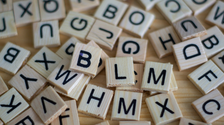Have you ever had problems getting the Japanese pronunciation right? Are you worried that you might be speaking Japanese with the thick accent of your native tongue? Do you want to make sure you are using the correct Japanese pronunciation?
When learning Japanese, or any language in particular, it is highly important to correctly pronounce the words. This not only facilitates the speaker to be understood well, but allows the speaker to listen more effectively. Many language learners make the mistake of attempting to fit the pronunciation of another language into their own native tongue. This causes problems: learners memorise new vocabulary with their own pronunciation, learners fail to interpret words of native speakers, and native speakers have trouble understanding the learners’ words. It may already be too late when learners realise that they have to change their pronunciation, and need to put in double the effort to restructure their pronunciation pattern.
Here are some simple tips to develop better Japanese pronunciation. We will look at the most common pronunciation issues language learners struggle with.
The letter ら
ら has no equivalent pronunciation in the English language. The closest one can get to is the “ra” and “la” sound. Japanese learners tend to use one or the other (I guess most learners go with the “ra” sound since the letter is generally spelled as “ra” or something similar in many English to Japanese dictionaries). However, this is not the correct sound. Neither “ra” nor “la” exists in Japanese pronunciation.
This is where the International Phonetic Alphabet (IPA) comes into play. If you have never heard of the IPA, I suggest you take a look at the link below. The IPA is basically a manual of all the types and variety of pronunciation one can make, using various positions of the mouth, tongue, lips, throat and breath. You can find more information here.
According to IPA, the sound that represents ら is ɽ and it is called the retroflex flap. Read more about this here. There is also a feature section that explains how you should make the sound.
I would like to give you my tips on making this sound:
- The tip of the tongue should be slightly curled, and placed on an inverted slope on the upper jaw of your mouth.
- Don’t place your tongue too far back to the roof of your mouth, because this will make you produce the “ra” sound.
- Also, try not to place your tongue too far forward (right behind your front upper teeth) as that will create the “la” sound.
- Try finding the balance point, where you can hear 60-70% of the “ra” sound and 20-30% of the “la” sound.
- If you are having a hard time, first try making the sound “ra”, followed with “la”, and keep repeating them one after the other while trying to find the midpoint.
- Your tongue should flick with one muscle contraction. Don’t try and drag your tongue along the roof of your mouth, as you won’t get the right sound.
The letter ふ
ふ is a midpoint between “fu” and “hu”. It cannot be described using English pronunciation. The best I can get with English letters is “fhu”. When we create the “fu” sound, we start by placing our front teeth on our lower lips. That creates the “f” consonant sound. However, we are not necessarily trying to make that consonant when pronouncing ふ.
According to IPA, the sound that represents ふ is ɸ. This is called the voiceless bilabial fricative. You can find more information about it here.
Here are my tips of making this sound.
- Imagine blowing a flute. Imagine rounding your lips as you place it on the mouth of the flute. That’s the type of shape you want your mouth to form when you attempt to make this sound.
- Let the air come out of your stomach. Blow the air from your stomach to create the sound. It would be even better if you can see/feel your stomach contracting. You should able to hear both the “h” and “f” consonant sounds evenly distributed.
- Try practicing the pronunciation using the word ふうせん which means balloon.
The letter ん
ん has no relation whatsoever with the English consonant sound “n”, so don’t let this pop into your mind when trying to create the ん sound. The “n” sound is created by placing the tongue in-between the top and bottom front teeth. The letter ん is pronounced in the throat, or rather, the glottis.
According to the IPA, the sound that represents ん is ʔ which is called glottal stop. More information can be found here.
Here are my tips when it comes to making this sound.
- Visualize the process of drinking water. What happens when you drink water? You create a gulping noise. That gulping noise is created by your glottis closing. You want to close the glottis when it comes to the ん sound.
- Place your fingers on your throat or Adam’s apple. If you feel it vibrating, you are pronouncing it correctly.
- It’s best not to practice pronouncing the ん sound by itself, but practice pronouncing it with words. I usually use みかん as it’s the simplest way to practice this sound, and also because it means orange. By the way, when we talk about the colour orange, we do not say みかん色, but rather オレンジ色 (pretty weird but cool).
These are some of the pronunciation issues Japanese learners struggle with. I hope these tips can resolve your pronunciation problems, and help boost your pronunciation to a level equal to natives.
Keep reminding yourself about the proper pronunciation whenever you speak or read Japanese. You want to enjoy a smooth conversation with a native without them having any problems understanding you. There might not be an instantaneous change, however, in the long run you will start to see the benefits of your practice.







